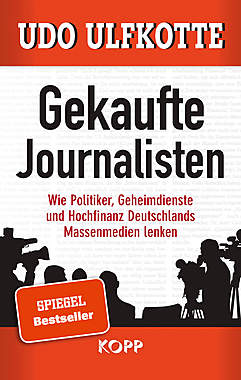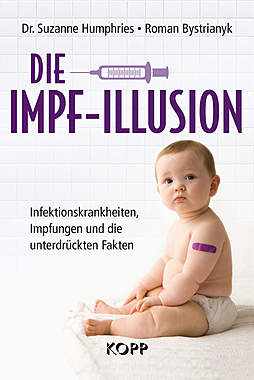- Passt zur Gold und Zinsdiskussion- etwas lang und mühsam, aber wichtig!!! - R.Deutsch, 13.08.2001, 21:45
Passt zur Gold und Zinsdiskussion- etwas lang und mühsam, aber wichtig!!!
By Reginald H. Howe
www.GoldenSextant.com
August 13, 2001
Due in no small measure to articles he wrote as a young
economist, especially his 1966 essay"Gold and Economic
Freedom" (reprinted in Ayn Rand,"Capitalism: The
nknown Ideal"), Fed Chairman Alan Greenspan is widely
recognized as quite an authority on gold. Far less
widely known are professional articles on gold by
another young economist who also went on to serve until
quite recently in some of the nation's top economic
policy positions.
Not long before joining the new Clinton administration
as undersecretary of the treasury for international
affairs, Harvard President and former Treasury
Secretary Lawrence H. Summers, then Nathaniel Ropes
professor of political economy at Harvard, co-authored
with Robert B. Barsky an article entitled"Gibson's
Paradox and the Gold Standard" published in the Journal
of Political Economy (vol. 96, June 1988, pp. 528-550).
The article, which appears to draw heavily on a 1985
working paper of the same title by the same authors, is
an excellent technical piece, revealing a high level of
expertise regarding gold, gold mining, and the
connections among gold prices, interest rates, and
inflation.
Indeed, for any administration concerned that the bond
vigilantes on Wall Street might thwart its economic
policies by pushing up long-term rates at inopportune
times, the article is must reading and qualifies its
authors as attractive candidates for government
service. Of even more interest, looking at the Clinton
administration retrospectively, the article provides
strong theoretical evidence that since 1995 gold prices
have not acted as would be expected in a genuine free
market, but instead have behaved as if subject to what
the authors describe as"government pegging
operations."
Lord Keynes gave the name"Gibson's paradox" to the
correlation between interest rates and the general
price level observed during the period of the classical
gold standard. It was, he said,"one of the most
completely established empirical facts in the whole
field of quantitative economics." (J.M. Keynes,"A
Treatise on Money" (Macmillan, 1930), vol. 2, p.198.)
And it was a paradox because contemporary monetary
theory, largely associated with Irving Fisher,
suggested that interest rates should move with the rate
of change in prices -- that is, the inflation rate or
expected inflation rate, rather than the price level
itself. Yet when Keynes wrote, data for the prior two
centuries showed that the yield on British consols
(government securities issued at a fixed rate of
interest but with no redemption date) had moved in
close correlation with wholesale prices but almost no
correlation to the inflation rate.
Economists have long tried to find a theoretical
explanation for Gibson's paradox. Professors Summers
and Barsky provide the following executive summary of
their contribution to this debate (at 528):
"A shock that raises the underlying real rate of return
in the economy reduces the equilibrium relative price
of gold and, with the nominal price of gold pegged by
the authorities, must raise the price level. The
mechanism involves the allocation of gold between
monetary and non-monetary uses. Our explanation helps
to resolve some important anomalies in previous work
and is supported by empirical evidence along a number
of dimensions."
They begin their article with an examination (at 530-
539) of the data supporting the existence of Gibson's
paradox, concluding that it was"primarily a gold
standard phenomenon" (at 530) that applies to real
rates of return. Regression analysis of the classical
gold standard period, 1821-1913, shows a close
correlation between long-term interest rates and the
general price level. The correlation is not as strong
for the pre-Napoleonic era, 1730-1796, when Britain
effectively adhered to the gold standard but many other
nations did not, and"completely breaks down during the
Napoleonic war period of 1797-1820, when the gold
standard was abandoned" (at 534).
Nor is the evidence of Gibson's paradox as strong for
the period of the interwar gold exchange standard,
1921-1938, which was marked by active central bank
management and restrictions on gold convertibility.
Following World War II, the correlation weakened
substantially under the Bretton Woods system, and
"[t]he complete disappearance of Gibson's paradox by
the early 1970s coincides with the final break with
gold at that time" (at 535).
With the nominal price of gold fixed, Barsky and
Summers note (at 529) that"the general price level is
the reciprocal of the price of gold in terms of goods.
Determination of the general price level then amounts
to the microeconomic problem of determining the
relative price of gold." For this, they develop a
simple model (at 539-543) that assumes full
convertibility between gold and dollars at a fixed
parity, fully flexible prices for goods and services,
and fixed exchange rates.
Next, they examine the response of the model to changes
in the available real rate of return. In this
connection, they observe (at 539):"Gold is a highly
durable asset, and thus... it is the demand for the
existing stock, as opposed to the new flow, that must
be modeled. The willingness to hold the stock of gold
depends on the rate of return available on alternative
assets." With respect to the gold stock, the model
distinguishes between bank reserves (monetary gold
under the gold standard) and non-monetary gold,
principally jewelry.
Summarizing the mathematical formulas of the model,
Barsky and Summers make two key points. The first (at
540):
"The price level may rise or fall over time depending
on how the stock of gold, the dividend function
[formulaic abbreviation omitted], and the demand for
money [formulaic abbreviation omitted] evolve over
time. Secular increases in the demand for monetary and
non-monetary gold caused by rising income levels tend
to create an upward drift in the real price of gold
that is secular deflation. Tending to offset this
effect would be gold discoveries and technological
innovations in mining such as the cyanide process."
And the second (at 542):
"The economic mechanism is clear. Increases in real
interest rates raise the carrying cost of non-monetary
gold, reducing the demand for it. They also reduce the
demand for monetary gold as long as money demand is
interest elastic. The resulting reduction in the real
price of gold is equivalent to an increase in the
general price level."
Because the model is"essentially a theory of the
relative price of gold," Barsky and Summers postulate
(at 543) that"an important test of the model is to see
how well it accounts for movements in the relative
price of gold (and other metals) outside the context of
the gold standard." They continue (id.):
"The properties of the inverse relative prices of
metals today ought to be similar to the properties of
the general price level during the gold standard years.
We focus on the period from 1973 to the present, after
the gold market was sufficiently free from government
pegging operations and from limitations on private
trading for there to be a genuine 'market' price of
gold."
And they conclude (at 548):
"The price level under the gold standard behaved in a
fashion very similar to the way the reciprocal of the
relative price of gold evolves today. Data from recent
years indicate that changes in long-term real interest
rates are indeed associated with movements in the
relative price of gold in the opposite direction and
that this effect is a dominant feature of gold price
fluctuations."
In other words, the bottom line of their analysis is
that gold prices in a free market should move inversely
to real interest rates. Under the gold standard, higher
prices meant that an ounce of gold purchased fewer
goods -- that is, the relative price of gold fell.
Since under the Gibson paradox long-term interest rates
moved with the general price level, the relative price
of gold moved inversely to long-term rates. Assuming,
as Barsky and Summers assert, that the Gibson paradox
operates in a truly free gold market as it did under
the gold standard, gold prices will move inversely to
real long-term rates, falling when rates rise and
rising when they fall.
To test this proposition, particularly for the period
after 1984 not covered by Barsky and Summers in their
1988 article, Nick Laird has constructed the following
chart at my request. Nick is the proprietor of
www.sharelynx.net, which offers an excellent collection
of charts relating to gold and financial matters, and I
am most grateful for his assistance. The chart plots
average monthly gold prices on the inverted right scale
-- that is, higher prices at the bottom. Real long-term
rates are plotted on the left scale. They are defined
as the 30-year U.S. Treasury bond yield minus the
annualized increase in the Consumer Price Index
(calculated as the sum of the monthly CPI increases for
the preceding 12 months).
* * *
TO SEE CHART, GO TO
http://www.goldensextant.com/commentary18.html#anchor196905
* * *
As the chart shows, Gibson's paradox continued to
operate for another decade after the period covered by
Barsky and Summers. But some time around 1995, real
long-term interest rates and inverted gold prices began
a period of sharp and increasing divergence that has
continued to the present time. During this period, as
real rates have declined from the 4 percent level to
near 2 percent, gold prices have fallen from $400 per
ounce to around $270 rather than rising toward
the $500 level as Gibson's paradox and the model of it
constructed by Barsky and Summers indicates they should
have.
The historical evidence adduced by Barsky and Summers
leaves but one explanation for this breakdown in the
operation of Gibson's paradox: what they call
"government pegging operations" working on the price of
gold. What is more, this same evidence also
demonstrates that absent this governmental interference
in the free market for gold, falling real rates would
have led to rising gold prices, which, in today's world
of unlimited fiat money, would have been taken as a
warning of future inflation and likely triggered an
early reversal of the decline in real long-term rates.
Other analysts have noted the inverse relationship
between real rates and gold prices. An interesting and
informative recent article along these lines is Adam
Hamilton's"Real Rates and Gold," which makes reference
to a 1993 Federal Reserve study containing the
following statement:"The Fed's attempts to stimulate
the economy during the 1970s through what amounted to a
policy of extremely low real interest rates led to
steadily rising inflation that was finally checked at
great cost during the 1980s."
The low real long-term interest rates of the past few
years may have been engineered with far more
sophistication than those of a generation ago,
including the coordinated and heavy use of both gold
and interest rate derivatives. By demonstrating that
falling real long-term rates will lead to rising gold
prices absent government interference in the gold
market, Barsky and Summers underscore the futility of
trying to control the former without also controlling
the latter. But they do not provide a model for
successful long-term suppression of gold prices in the
face of continued low real rates.
What they do indicate (at 548), however, is that their
model of Gibson's paradox accords only a"minimal role"
to"new gold discoveries" and fails to account fully
for shifts between monetary and non-monetary gold. As
they note (at 546-548), the fraction of the total gold
stock held in non-monetary form during the gold
standard era was substantial, perhaps exceeding one-
half, and the fraction varied over time. Also (at 548),
"the post-1896 rise in prices, after more than two
decades of deflation, is usually attributed to gold
discoveries in combination with the development of the
cyanide process for extraction."
Accordingly, they conclude (at 548-549) that their
"proposed resolution of the Gibson paradox cannot be
the whole answer" and that determination of"the
quantitative importance of the mechanism in this paper
would require better methods for proxying movements in
the stocks of monetary and non-monetary gold, and this
might be an appropriate topic for further research."
The unusual and sharp divergence of real long-term
interest rates from inverted gold prices that began in
1995 suggests that Mr. Summers found an opportunity to
do some further applied research on these matters
during his tenure at the Treasury.
Both the heavy use of forward selling by mining
companies and the World Gold Council's obsession with
promoting gold as jewelry to the near exclusion of its
historic monetary role appear designed to exploit the
conceded points of vulnerability in the operation of
the model.
Viewed in this light, these two novel and
distinguishing features of the post-1995 gold market
appear less accidental and more as the handmaidens of
the government price-fixing operations that the model
reveals.
At the time of his appointment, Professor Summers was
the youngest tenured professor in Harvard's modern
history. On Friday, October 12, 2001, in outdoor
ceremonies in Tercentenary Theatre, he will be formally
installed as its 27th president, entrusted with the job
of leading into the new millennium the nation's oldest
university, where"Veritas" is the motto.
Three days earlier, in Courtroom No. 11 of the new U.S.
Courthouse on Boston Harbor, the search for the truth
about his interim service in the highest positions at
the U.S. Treasury will resume.
Judge Lindsay has scheduled for Tuesday, October 9, at
3:30 p.m, a hearing on the defendants' motion to
dismiss in Howe vs. Bank for International Settlements
et al. The underlying issue in that proceeding is
whether the Constitution and laws of the United States
may be enforced in a federal court action challenging
the authority of Mr. Summers and other American
officials, working at least in part through the Bank
for International Settlements, to conduct the
surreptitious and illegal gold price-fixing operations
exposed even by his own academic research.
-END-
<center>
<HR>
</center>
gesamter Thread:
 Mix-Ansicht
Mix-Ansicht

